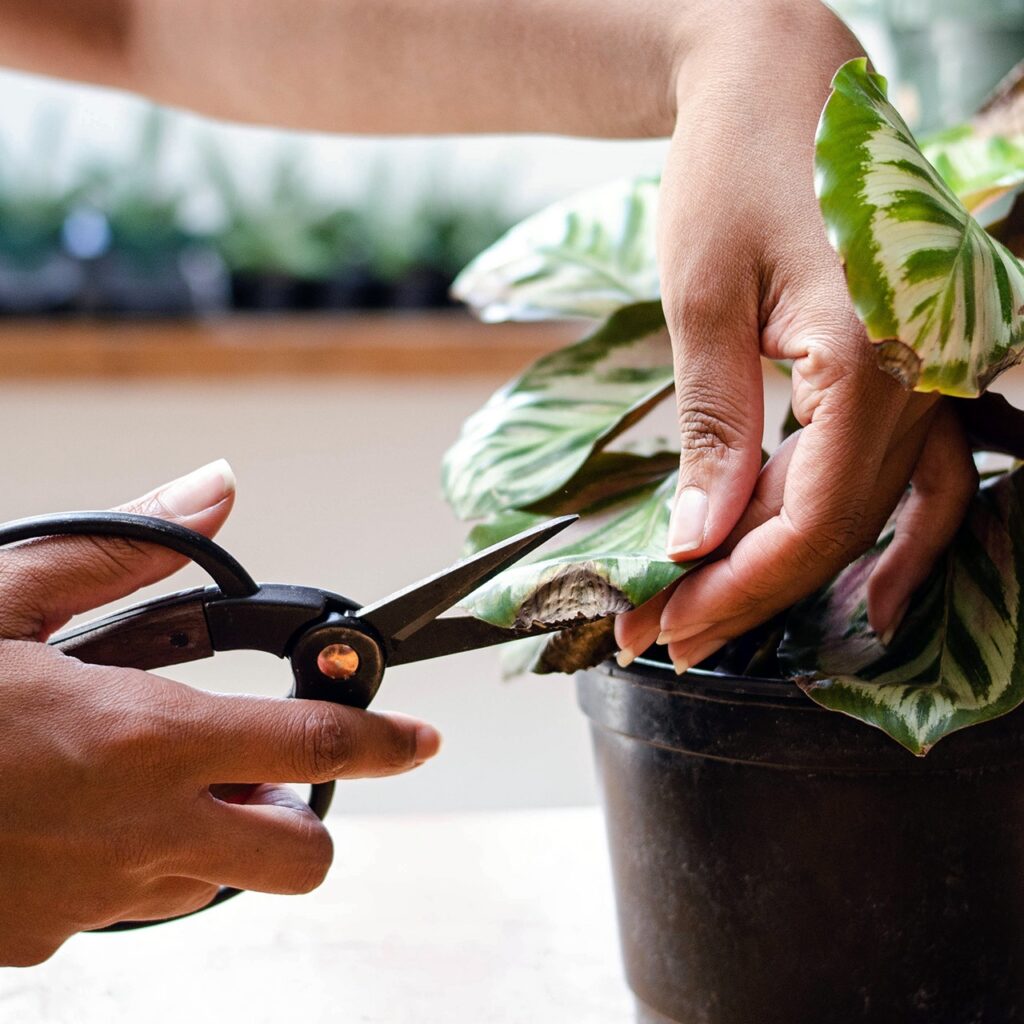How to Prune a Plant – A Comrehensive Guide

Pruning is a vital horticultural practice that involves selectively removing parts of a plant to improve its health, shape, and productivity. Whether you’re maintaining ornamental plants, fruit trees, or shrubs, proper pruning can encourage new growth, enhance flowering or fruiting, and maintain the overall aesthetic appeal of your garden or landscape. This comprehensive guide will cover the basics of pruning, including reasons for pruning, tools needed, techniques for different types of plants, timing considerations, and essential tips for successful pruning.
Why Prune Plants?
Pruning serves several purposes that contribute to the overall health and appearance of plants:
- Promotes Growth: Removal of dead or overgrown branches stimulates new growth.
- Improves Air Circulation: Thinning out dense foliage reduces disease risk by improving airflow.
- Shapes Plants: Pruning helps maintain desired shape and size.
- Enhances Appearance: Encourages flowering, fruiting, and overall aesthetic appeal.
- Removes Diseased or Damaged Parts: Prevents spread of diseases and pests.
Tools Needed for Pruning
Before you begin pruning, gather the following tools:
- Pruning Shears: Also known as secateurs, used for cutting small to medium-sized branches.
- Loppers: For thicker branches that pruning shears cannot handle.
- Pruning Saw: Used for larger branches or woody stems.
- Gloves: Protect hands from thorns, sharp edges, or sap.
- Safety Glasses: Protect eyes from debris and falling branches.
- Disinfectant: To sterilize tools between plants, preventing the spread of diseases.
Basic Pruning Techniques
1. Cleaning Cut
- Purpose: Remove dead, diseased, or damaged branches.
- Technique: Cut back to the main stem or to a healthy lateral branch without leaving stubs.
2. Thinning Cut
- Purpose: Reduce density to improve airflow and light penetration.
- Technique: Remove entire branches or stems at their base to open up the plant.
3. Heading Cut
- Purpose: Encourage bushier growth and control height.
- Technique: Cut just above a bud to promote new growth in the desired direction.
Pruning Different Types of Plants
1. Deciduous Trees
- Timing: Prune in late winter or early spring before new growth begins.
- Technique: Remove dead or crossing branches; thin out the canopy to improve light penetration.
2. Evergreen Trees and Shrubs
- Timing: Prune in early spring or late summer.
- Technique: Lightly shape to maintain form; remove dead or diseased branches.
3. Fruit Trees
- Timing: Prune in late winter or early spring while trees are dormant.
- Technique: Remove old or unproductive branches; open up the canopy for better fruit production.
4. Flowering Shrubs
- Timing: Prune after flowering to avoid cutting off next season’s buds.
- Technique: Remove old wood; shape to encourage flowering branches.
Timing Considerations
- Dormancy: Many plants are best pruned during their dormant season to minimize stress and maximize regrowth potential.
- After Flowering: Flowering plants should be pruned after they bloom to avoid cutting off next season’s buds.
Essential Tips for Successful Pruning
- Know Your Plant: Research specific pruning needs for each type of plant to ensure proper technique and timing.
- Use Sharp Tools: Sharp, clean cuts promote faster healing and reduce the risk of infection.
- Start Small: Begin with minor cuts and assess the plant’s response before making more significant changes.
- Step Back and Assess: Periodically step back to evaluate the plant’s shape and balance during pruning.
- Practice Patience: Avoid over-pruning; plants may take time to recover and respond to pruning.
Common Pruning Mistakes to Avoid
- Over-Pruning: Removing too much foliage can stress the plant and inhibit growth.
- Improper Cuts: Leaving stubs or making rough cuts can lead to disease or slow healing.
- Timing Errors: Pruning at the wrong time can affect flowering or fruiting.
Conclusion
Pruning is a skillful gardening practice that enhances the health, appearance, and productivity of plants. By understanding the reasons for pruning, using the right tools and techniques, considering timing and plant type, and following essential tips, you can effectively maintain your garden or landscape with well-pruned plants. Remember, each plant species has unique pruning needs, so take time to learn about specific requirements and adjust your approach accordingly. With practice and careful attention, pruning can become a rewarding aspect of gardening that promotes vigorous growth and enhances the beauty of your outdoor space.




